BY ASHLEY YOUNG
Another weekend trip coordinated by our UCEAP staff was to Kumasi, which is the capital of the Ashanti Region in Ghana. While there, we visited the Manhyia Palace, Adanwomase Village, and Ntonso. We also went shopping at a local art market, went swimming at Lake Bosomtwe, and had some awesome group meals. Below, check out some descriptions and cool pictures of our adventures!
The Manhyia Palace:
The Manhyia Palace is the seat and residence of the Asantehene, the traditional ruler, or king, of the Ashanti Kingdom and the Ashanti Region. We visited the Manhyia Palace Museum, which has been converted from the original palace and is directly adjacent to today’s Manhyia Palace, where the current Ashanti King, Otumfuo Osei Tutu II, lives.
Visiting the palace was very interesting, as we were able to learn about the traditional systems of power in Ghana. The trip was also relevant to one of the classes I am taking while studying abroad: Issues in Africa’s International Relations. Just last week, my professor spent a portion of the class discussing how traditional and modern political systems in Africa interact, and how their relationships are largely a result of the European scramble for Africa and colonization. All over Africa, there are systems of power layered over one another – systems that existed before colonization, based largely around ethnicity and historical power – and systems that came to be as a result of colonization – those determined, sometimes arbitrarily, by European powers as they divided and occupied Africa amongst themselves. These overlapping systems constantly wrestle with one another, and this has many implications for African nations. For example, while the sovereignty of African states is recognized externally, it may not be recognized internally (by the people living within it). This can lead to a variety of issues, such as irredentism, low resource mobilization, ethnic armies, and dependency on external governments. All in all, visiting the palace was a great way to engage with my academic learning on an experiential level – something that I have really enjoyed about studying abroad.
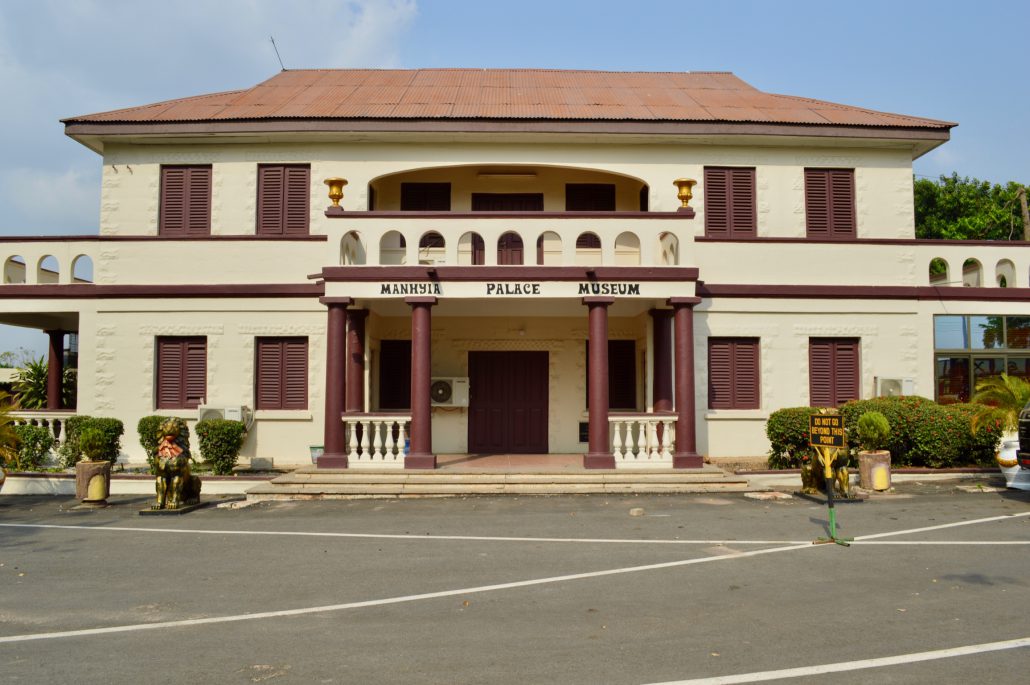
Adanwomase Village and Ntonso:
Adanwomase Village is a small village near Kumasi where kente cloth, a type of fabric made of interwoven thread, is made. Kente is native to the Akan ethnic group of Ghana, and it is very important in the local culture. Many of the various patterns that can be seen in kente cloth, as well as the colors of the threads themselves, have symbolic meaning. The cloth was traditionally worn only by kings, but today its use is more widespread. At Adanwomase village, our group watched locals weave kente cloth, and we even got to try our own hand at the craft!

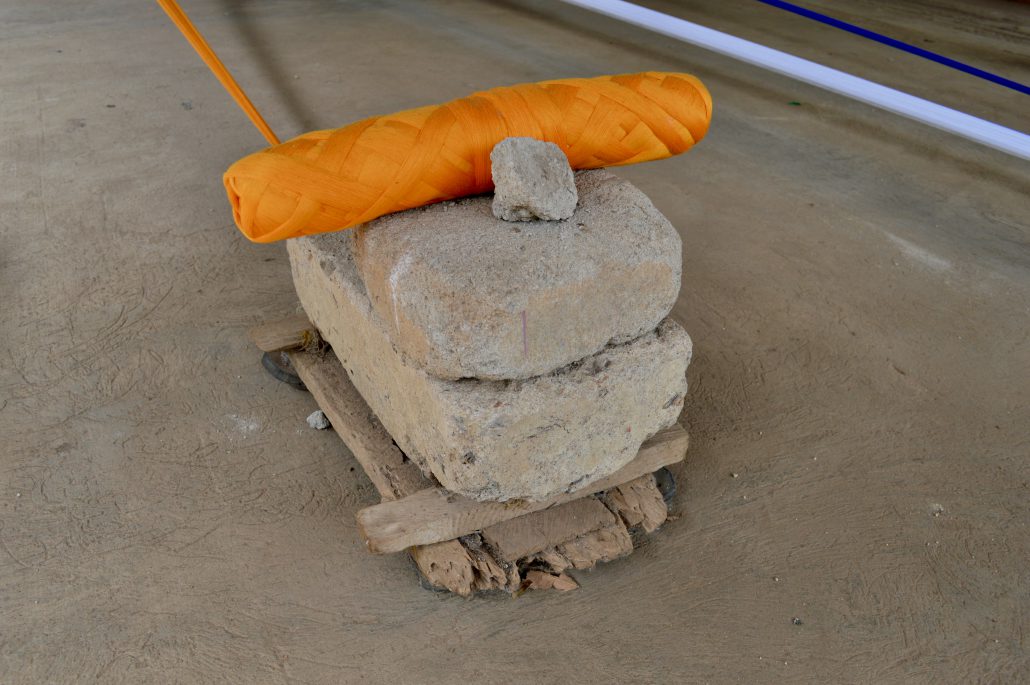
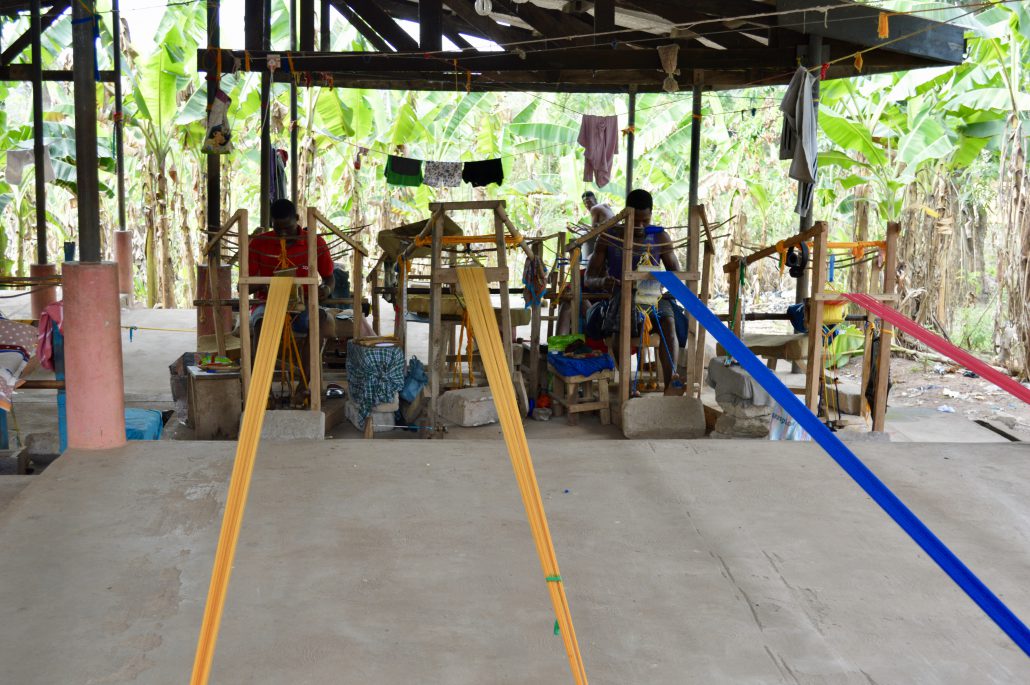
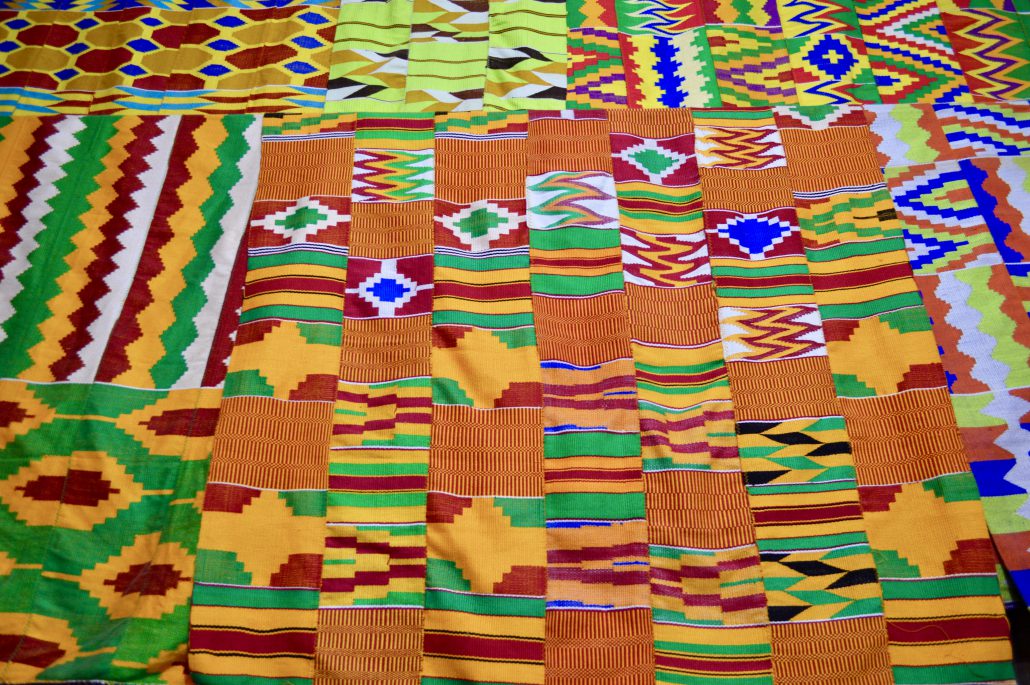
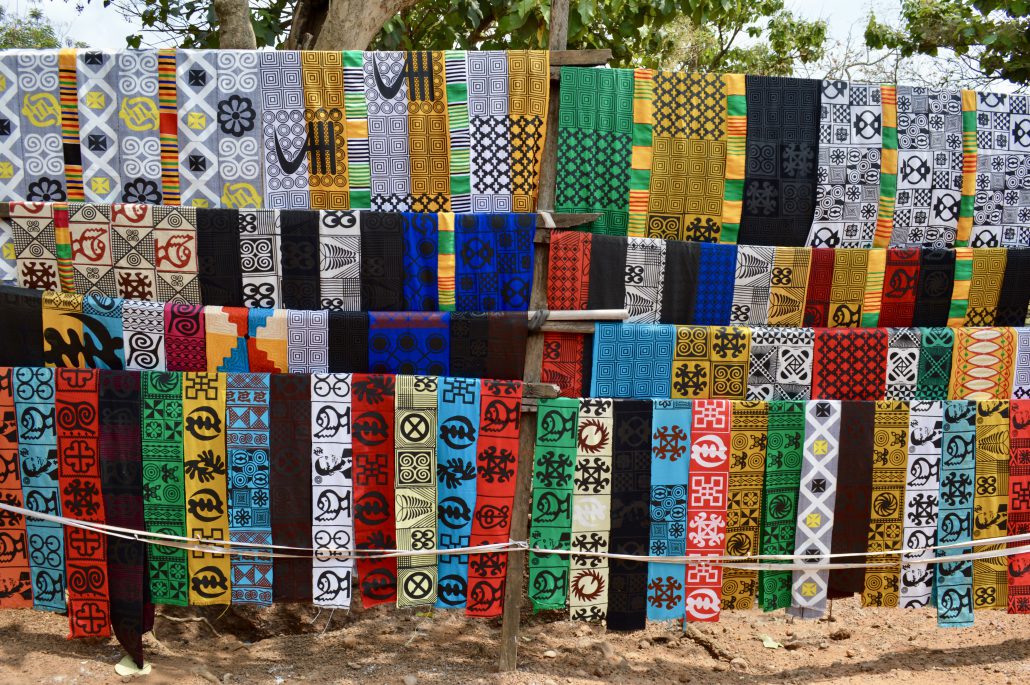
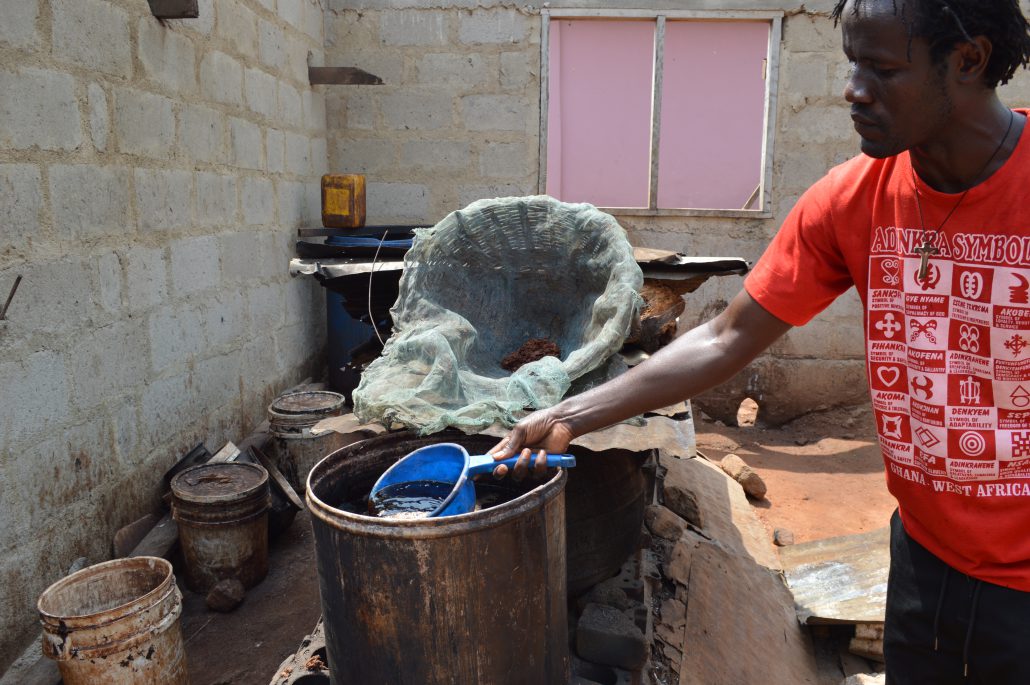
After learning about kente, we drove to a nearby town – Ntonso – where we learned about adinkra. Adinkra are symbols, each with a distinct meaning, that encapsulate messages, or proverbs, concerning traditional wisdom and aspects of life. The symbols are often carved onto furniture and into buildings, painted on pottery, and stamped onto fabric to be worn or decorated with. In Ntonso, we each picked out adinkra symbols that resonated with us, and then stamped them onto pieces of kente cloth, making our very own pieces of art. This was a great way to learn about some of the philosophies and perspectives of people living in Ghana, and allowed us to understand the culture a little bit more.
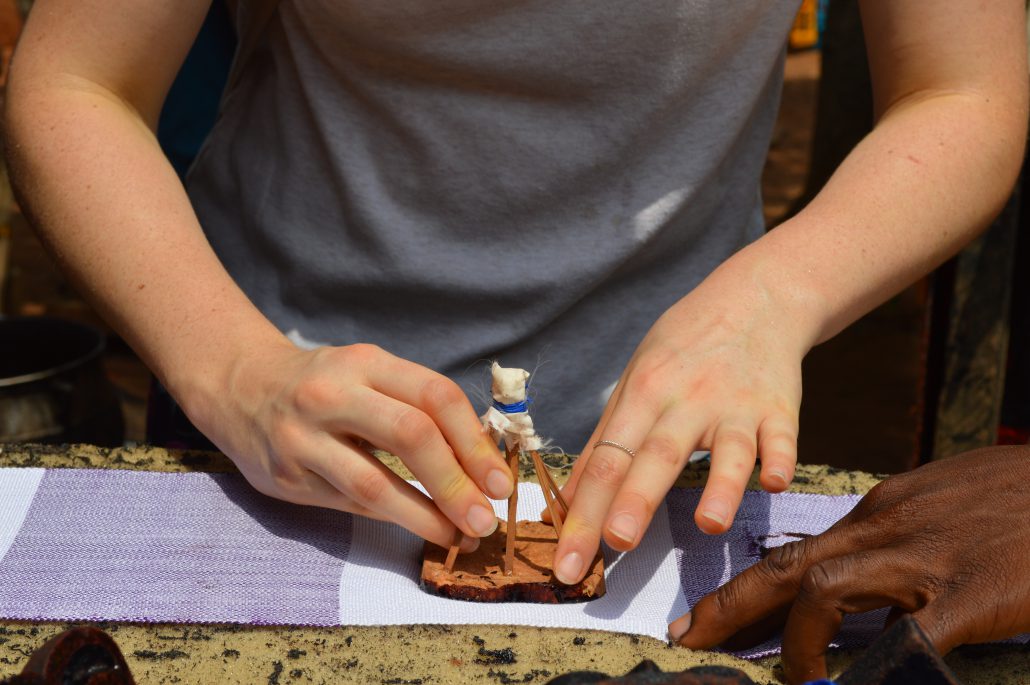
All in all, the weekend was great fun! I can’t wait for what’s next!
Ashley
———————————————————————————————————————
Complimentary Twi Lesson!:
Wo ho te sεn / εte sεn? – How are you? (Literally: How is your body?)
Me ho yε / εyε – I am good (Literally: My body is fine)
Yɛfrɛ wo sɛn / Me din de sɛn? – What is your name?
Yɛfrɛ me … / Me din de … – My name is …
Ashley Young studied abroad in Accra, Ghana in 2018: https://uceap.universityofcalifornia.edu/programs/explore-ghana



